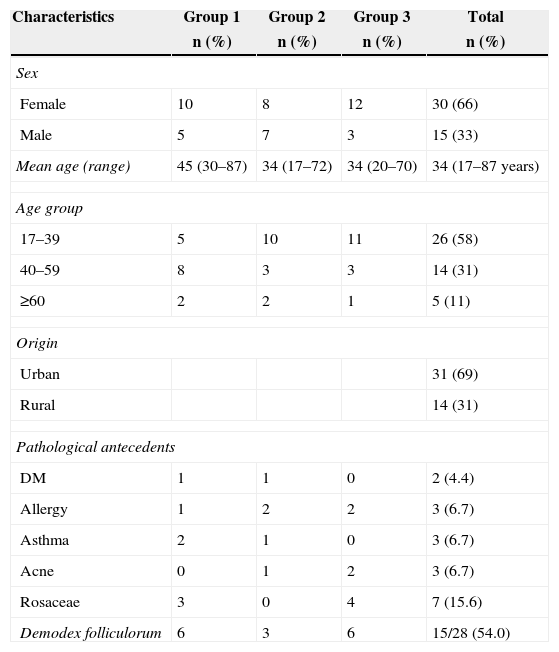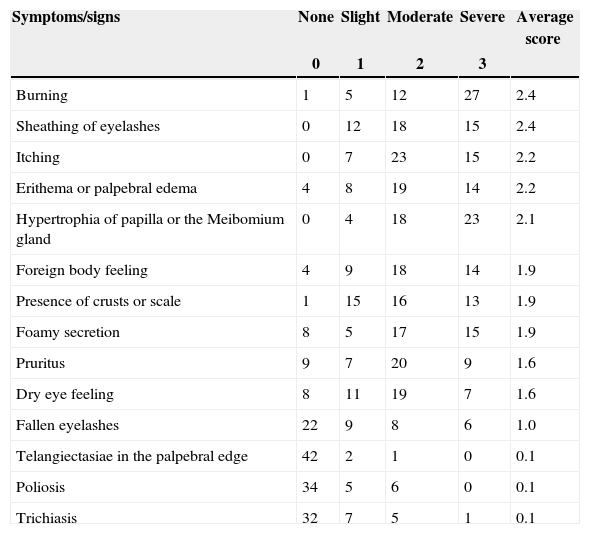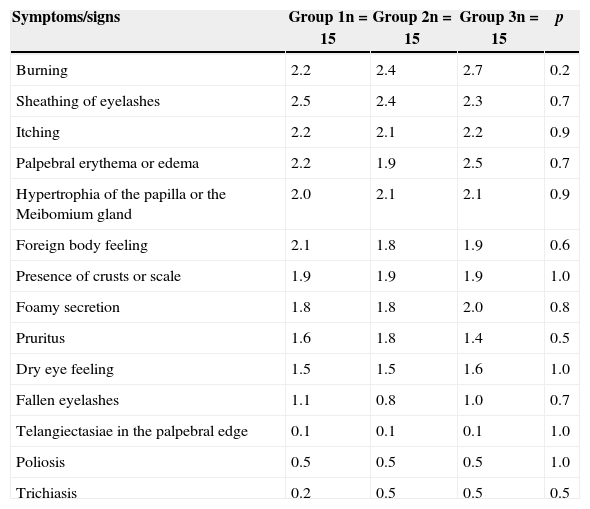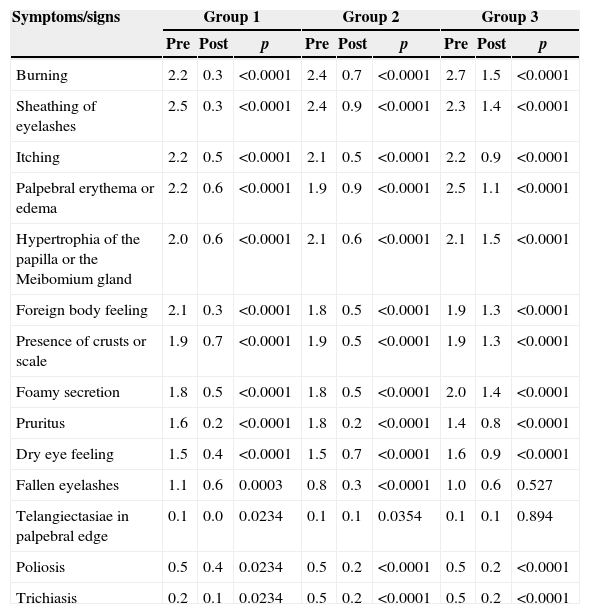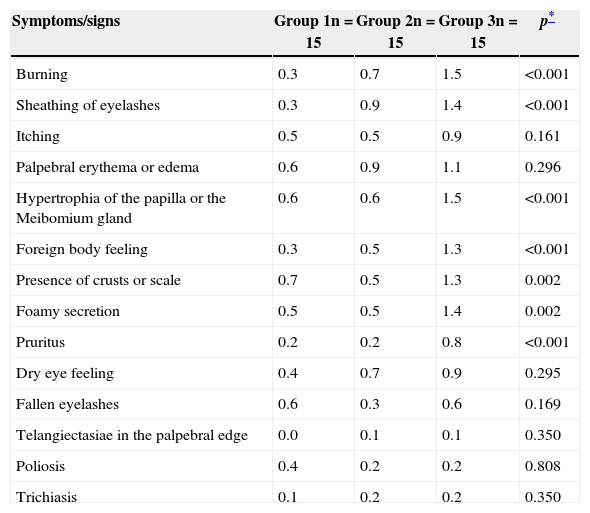To compare the efficacy of 3 treatment options in patients with chronic blepharitis.
MethodologyAn experimental, randomized, controlled study was conducted on 45 patients (female 67%; mean age: 40.5 years) diagnosed with chronic blepharitis, in order to compare the effectiveness of three treatment options. Group 1: eyelid hygiene with neutral shampoo three times/day; group 2: neutral shampoo eyelid hygiene plus topical metronidazole gel 0.75% twice/day; group 3: neutral eyelid hygiene with shampoo plus neomycin 3.5% and polymyxin 10% antibiotic ointment with 0.5% dexamethasone 3 times/day. The symptoms and signs were assessed by assigning scores from 0: no symptoms and/or signs; 1: mild symptoms and/or signs, 2: moderate symptoms and/or signs; and 3: severe symptoms and/or signs.
ResultsA significant improvement was observed in the signs and symptoms in all 3 treatment groups. While groups 1 and 2 had more improvement in all variables studied (P<.05), Group 3 showed no clinical improvement for itching (P=.16), dry eye (P=.29), eyelashes falling (P=.16), and erythema at the eyelid margin (P=.29).
ConclusionsShampoo eyelid hygiene neutral and neutral shampoo combined with the use of metronidazole gel reported better hygiene results than neutral shampoo lid with antibiotic ointment and neomycin and polymyxin dexamethasone.
Comparar la eficacia de 3 modalidades de tratamiento en pacientes con blefaritis crónica.
MetodologíaSe realizó un estudio experimental, aleatorizado y controlado en 45 pacientes (sexo femenino: 67%; edad media: 40.5 años) con diagnóstico de blefaritis crónica para comparar la eficacia de 3 modalidades de tratamiento. Grupo 1: higiene palpebral con champú neutro 3 veces/día; grupo 2: higiene palpebral con champú neutro y gel tópico de metronidazol al 0,75% 2 veces/día; grupo 3: higiene palpebral con champú neutro y pomada antibiótica de neomicina al 3,5% y polimixina al 10% con dexametasona al 0,5% 3 veces/día. Los síntomas y signos fueron valorados asignándoles puntuaciones entre 0: sin síntomas ni signos; 1: síntomas o signos leves; 2: síntomas o signos moderados y 3: síntomas o signos severos.
ResultadosEn los 3 grupos de tratamiento se observó mejora significativa de los signos y síntomas. Mientras que los grupos 1 y 2 presentaron una mayor mejoría en todas las variables estudiadas (p<0,05), el grupo 3 no presentó mejoría clínica para comezón (p=0,16), ojo seco (p=0,29), caída de pestañas (p=0,16) ni eritema en el borde palpebral (p=0,29).
ConclusiónLa higiene palpebral con champú neutro y el uso combinado de champú neutro con gel de metronidazol reportaron mejores resultados que la higiene palpebral con champú neutro y pomada antibiótica de neomicina y polimixina con dexametasona.







